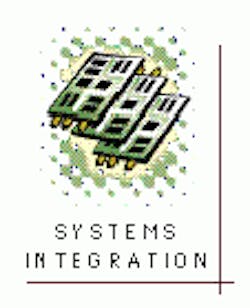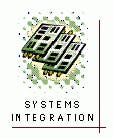Image computer adds three dimensions to ultrasound
Maintaining conventional two-dimensional (2-D) ultrasound scanning practices while offering three-dimensional (3-D) volumetric representations requires the capturing of image and positional data of the relative orientation of the images. Following image- and positional-information capture, images can be reconstructed using 3-D volume-visualization techniques. According to Hillel Rom of BioMediCom (Jerusalem, Israel), this 3-D technology offers potential for reduced diagnostic times and greater accuracy in prognoses. His company has developed a 3-D ultrasound add-on system, Baby Face, that allows conventional ultrasound systems to be adapted for visualizing 3-D data.
SYSTEM OPERATION
During operation, 2-D images and positional information are captured from the ultrasound system with an ultrasound transducer developed in collaboration with Sonora Medical Systems (Longmont, CO). A motion tracker within the transducer gives positional data on the captured 2-D images. These data enable accurate 3-D volume reconstruction and high- quality visualization using 3-D software.
In the operation of the BabyFace 3-D ultrasound system, a user is able to isolate a region of interest using a semiautomatic segmentation method guided by an input contour provided by the user. The data are then sent to the software's visualization environment and a 3-D rendering is produced from the original 2-D ultrasound image.
Rom explains, "Two-dimensional images are first captured from the RS-170 video output of the ultrasound scanner and then acquired by a 4Sight imaging computer from Matrox Imaging (Dorval, Que., Canada). Concurrently, positional data on the relative orientation of the images are transferred to the computer from the sensor. Data are synchronized in the computer using software that results in a 3-D volume reconstruction."
According to Ziv Soferman, BioMediCom's chief scientist, one of the major challenges was producing 3-D renderings of noisy ultrasound images. "Our segmentation tools overcome the speckled nature of the images and isolate the tissue or organ of choice from its surroundings," he says.
BioMediCom's algorithms assist the user in isolating regions of interest (ROIs) using a semiautomatic segmentation method guided by an input contour provided by the user. The system takes this input contour (which surrounds the ROI) and fits it to the image edges. The resulting corrected contour serves as the template for the next image, and the system proceeds to segment all other captured images automatically. To avoid contour drifts, the user can interrupt segmentation at any point and manually correct the boundaries.
Soferman explains, "Our algorithmic approach to accurate segmentation relies on edge detection. By enhancing edges within the ROI, a subset of multiple disconnected segments can be selected and connected to form a continuous optimal contour. Where parts of the ROI are missing, the output contour bridges the gaps. When this segmentation occurs, a set of visualization tools allows manipulation of the volume.

